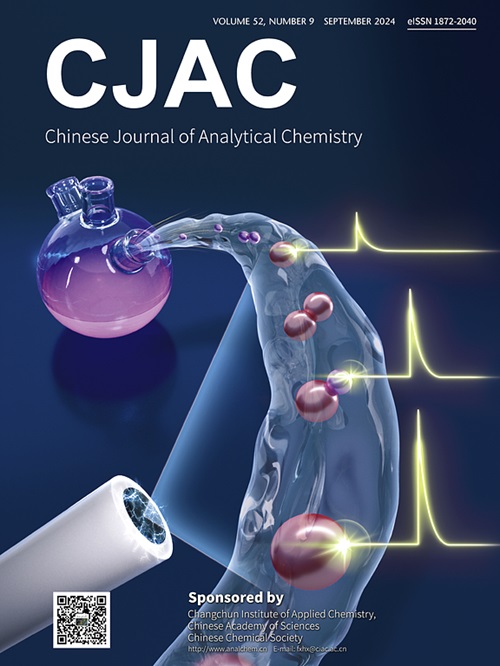测定伊斯法罕一次性塑料容器中的微塑料释放量
IF 1.3
4区 化学
Q4 CHEMISTRY, ANALYTICAL
引用次数: 0
摘要
一次性食品容器中广泛释放的微塑料引起了人们对健康和环境的极大关注。本研究旨在通过探讨各种因素,包括温度变化和勺子接触一次性餐具的影响,来阐明微塑料释放的内在机制。研究人员从伊朗伊斯法罕的市场上随机抽取了 30 个一次性聚苯乙烯容器样本。采用傅立叶变换红外光谱、场发射扫描电子显微镜、动态光散射、X 射线衍射和拉曼光谱等先进分析技术进行了综合分析。结果明确证实了这些容器释放的微塑料与聚苯乙烯在化学和结构上的相似性。此外,研究还发现,温度升高和勺子接触造成的物理搅拌都会显著增加容器中微塑料的释放量。当容器中只有水循环时,微塑料的最大释放量为 30 毫克(120 °C);而当勺子也在容器内移动时,微塑料的最大释放量增至 56 毫克(120 °C)。本文章由计算机程序翻译,如有差异,请以英文原文为准。

Determination of microplastic release from disposable plastic containers in Isfahan
The widespread release of microplastics from disposable food containers raises significant concerns for health and the environment. This study aimed to elucidate the underlying mechanisms of microplastic release by exploring various factors, including temperature variations and the impact of spoon contact on disposable utensils. A total of 30 samples of disposable polystyrene containers were randomly selected from markets in Isfahan, Iran. Advanced analytical techniques, including Fourier transform infrared spectroscopy, field emission scanning electron microscopy, dynamic light scattering, X-ray diffraction, and Raman spectroscopy, were employed for comprehensive analysis. The results unequivocally established the chemical and structural similarity between the microplastics released from these containers and polystyrene. Furthermore, the study revealed that both elevated temperatures and the physical agitation caused by spoon contact significantly increased the release of microplastics from the containers. The maximum amount of microplastics released was 30 mg at 120 °C when only water was circulated in the container, while it increased to 56 mg at 120 °C when the spoon was also moved inside the containers.
求助全文
通过发布文献求助,成功后即可免费获取论文全文。
去求助
来源期刊
CiteScore
3.60
自引率
25.00%
发文量
17223
审稿时长
35 days
期刊介绍:
Chinese Journal of Analytical Chemistry(CJAC) is an academic journal of analytical chemistry established in 1972 and sponsored by the Chinese Chemical Society and Changchun Institute of Applied Chemistry, Chinese Academy of Sciences. Its objectives are to report the original scientific research achievements and review the recent development of analytical chemistry in all areas. The journal sets up 5 columns including Research Papers, Research Notes, Experimental Technique and Instrument, Review and Progress and Summary Accounts. The journal published monthly in Chinese language. A detailed abstract, keywords and the titles of figures and tables are provided in English, except column of Summary Accounts. Prof. Wang Erkang, an outstanding analytical chemist, academician of Chinese Academy of Sciences & Third World Academy of Sciences, holds the post of the Editor-in-chief.

 求助内容:
求助内容: 应助结果提醒方式:
应助结果提醒方式:


